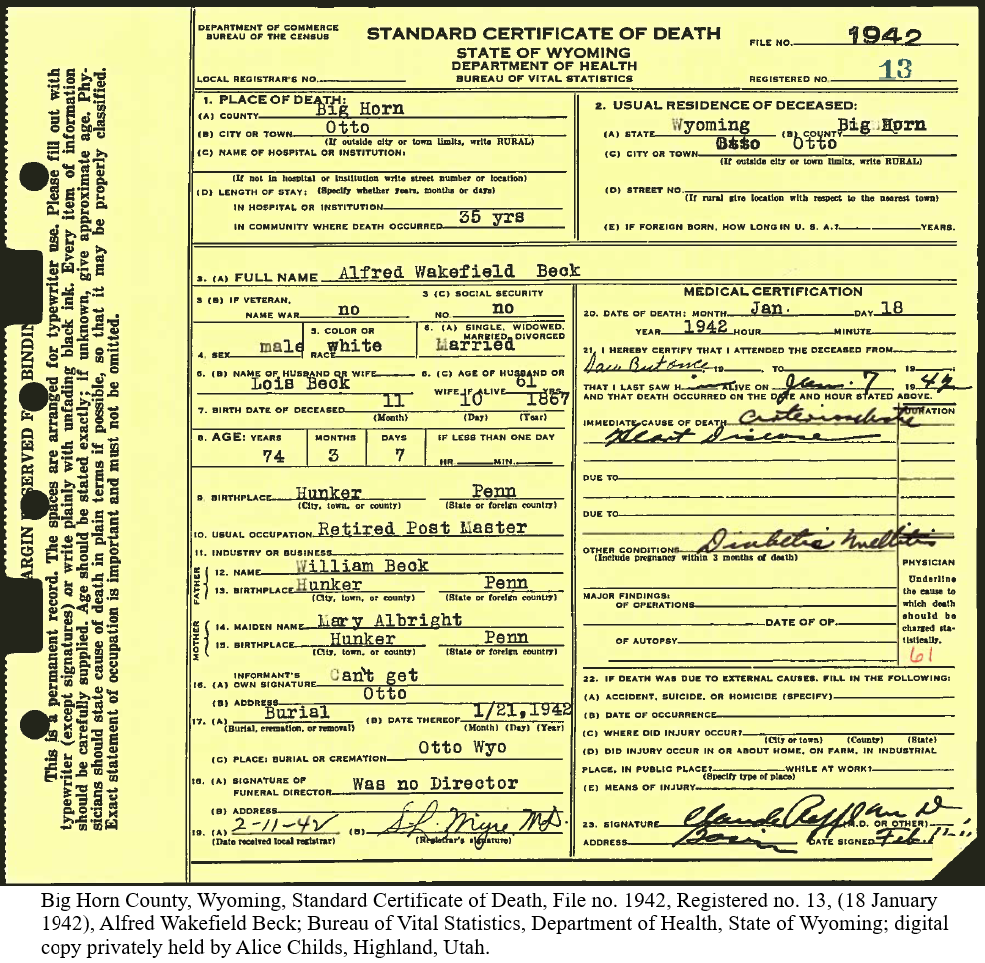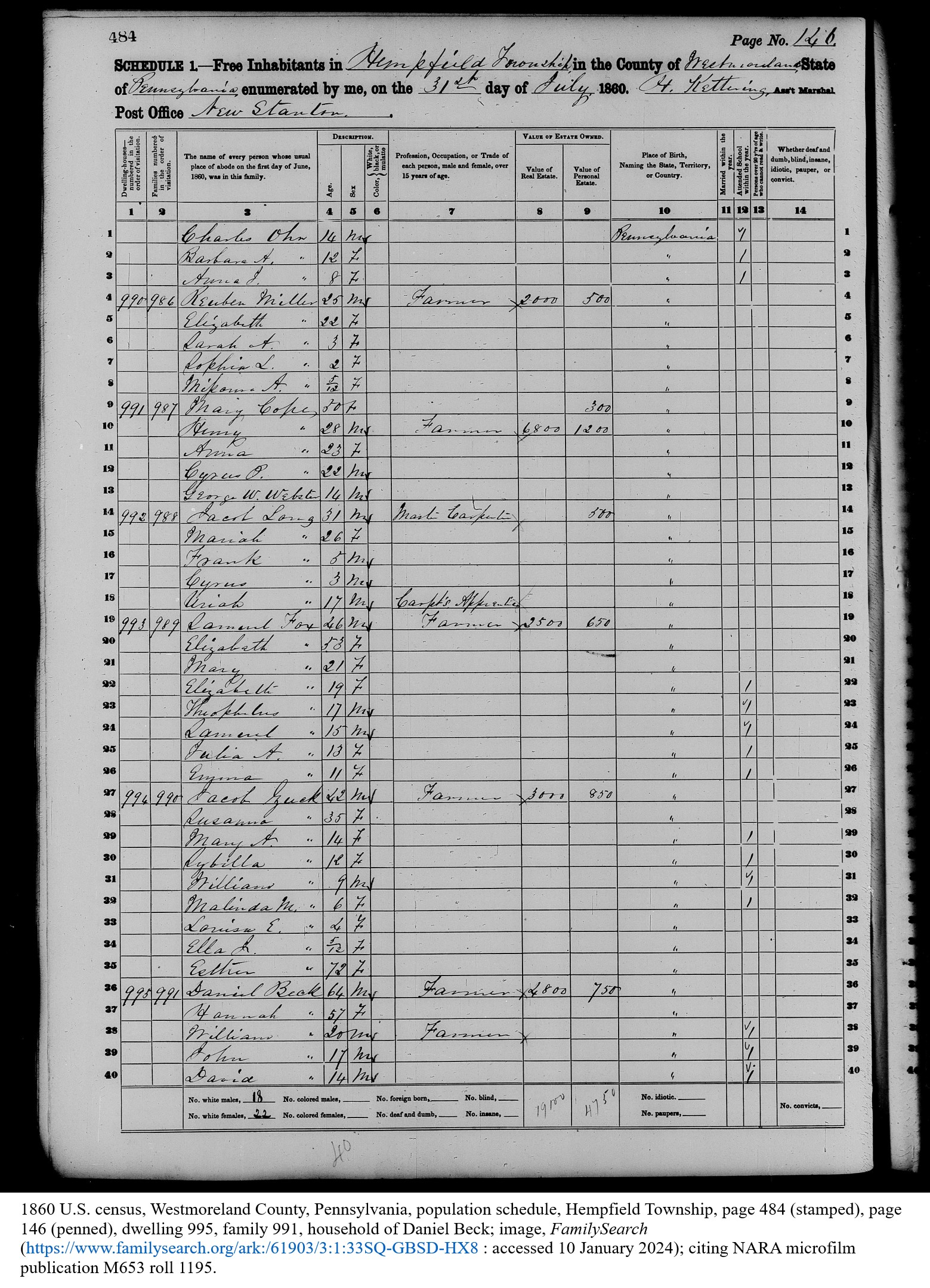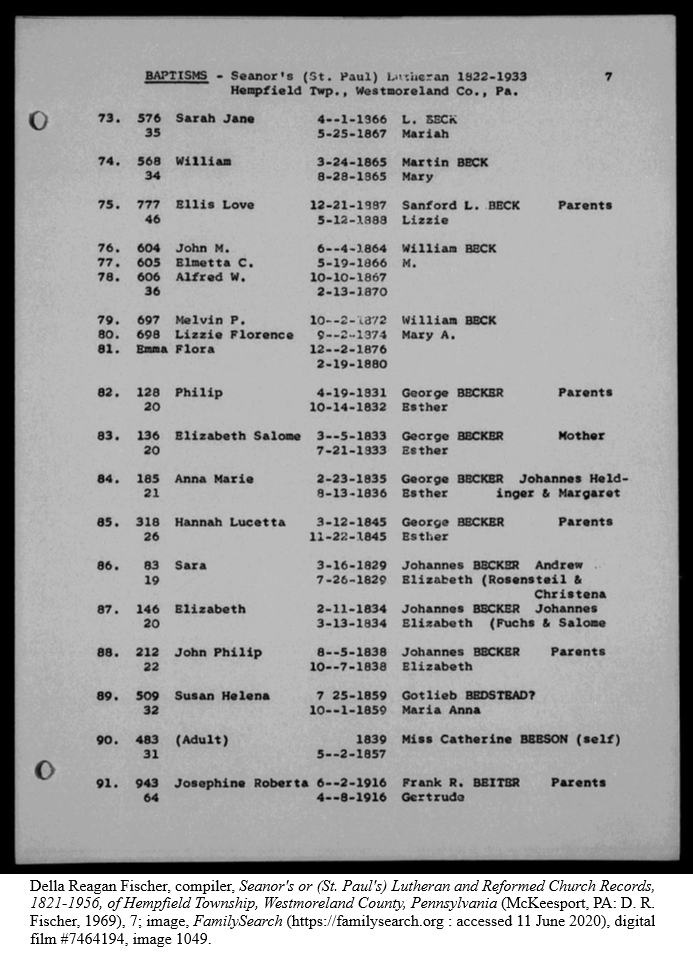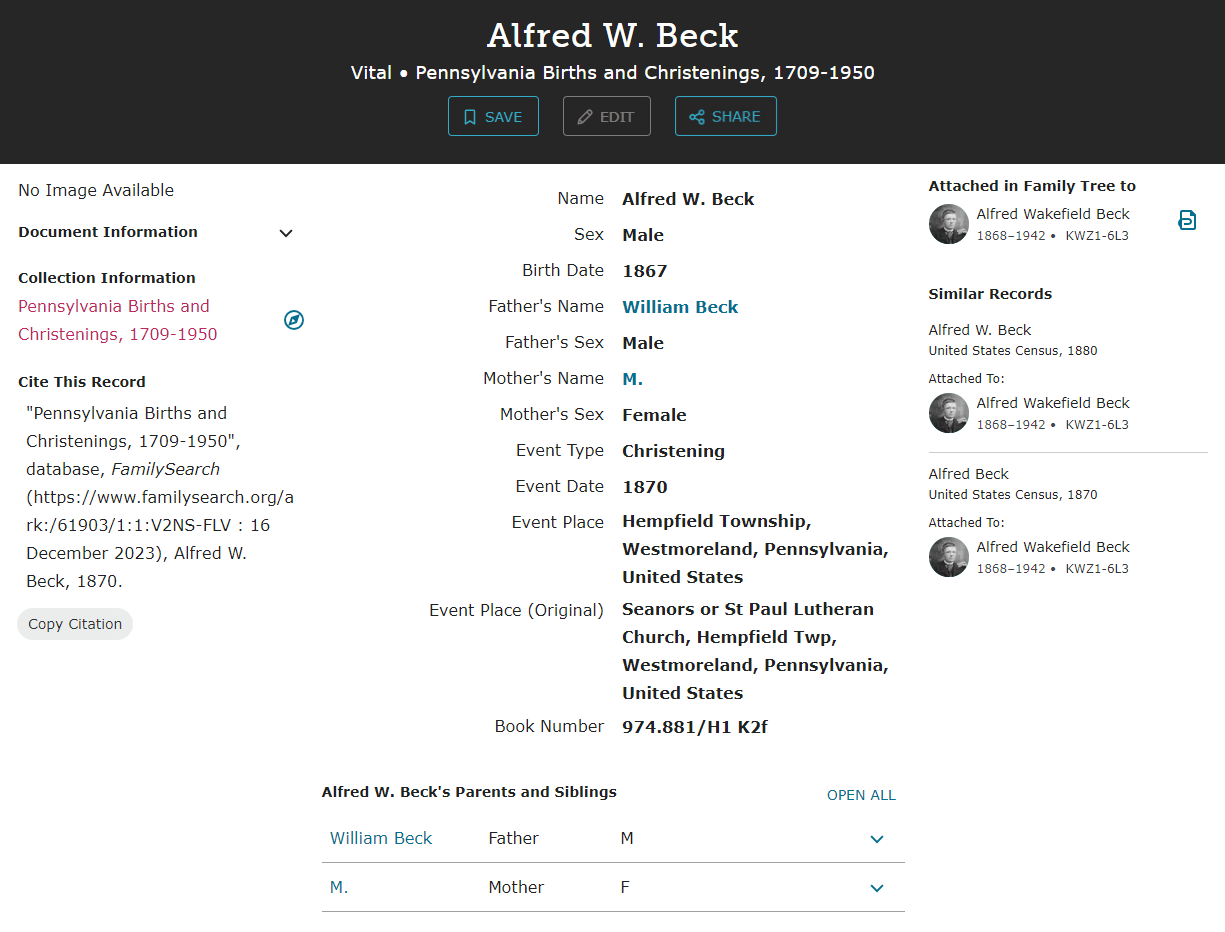
Welcome to the third installment in a six-part series about evidence analysis, or the process by which we determine the reliability of the evidence we discover in our research. Part One discussed the value of evidence analysis and presented three important questions to ask ourselves as we examine historical records about our ancestors:
- When and how was the source created?
- Who provided the information for the source?
- Do the facts in the source directly or indirectly answer the research question?
Part Two addressed the first question, “When and how was the source created?” In this post, we will see how to answer the second question, “Who provided the information for the source?”
Three Classes of Information
Information is classified by the informant, or the person who provided the information contained in the source. There are three classes:
- Primary Information: Details provided by a person who participated in or was a witness to the event. Even if they provided the information many years after the event occurred, that does not change their status as a primary informant. True, their memories might have dimmed and the information could be less accurate. Think about that when analyzing the likelihood that the information contained in a source is correct.
- Secondary Information: Details provided by a person who has secondhand knowledge of an event. Perhaps they were told the information from a friend or family member, and that information has been passed down as tradition over the years. Secondary information usually carries less weight than information provided by an eyewitness. Think of the old telephone game you used to play as a child. The starting person knows exactly what they said, but as the story gets passed to other people, it often changes – sometimes dramatically!
- Undetermined Information: This is information for which we do not know the informant, so we would have no idea whether they were an eyewitness to the event or not. We can sometimes guess who the informant might have been based on the record type and practices associated with its creation, but unless the informant is named or can clearly be identified in some way (such as their signature on the document), the information is still classified as undetermined.
One important concept to think about is that more than one person might have provided information for a record. Information analysis requires breaking down the document into pieces and determining who provided each piece of information. Let’s revisit our examples from Part 2.
Another caution is that the person who wrote down the information is not often considered to be the informant. The informant is the person who supplied the information to the recorder. In a majority of situations, the informant will be classified as Undetermined.
Examples
Death Certificate
We previously classified the death certificate for Alfred Wakefield Beck as an original source. Let’s think about who provided the information for this death certificate. Look at line sixteen on the left-hand side of the certificate. Ordinarily, the informant would sign this line and we would be able to classify whether the person had first or second-hand knowledge of every piece of information on the certificate. This one says “Can’t get” on the informant’s signature line. Because we don’t know who the informant was, the information about Alfred’s birth, spouse, and parents would be classified as Undetermined. A little research into the family revealed that Alfred’s wife Lois was still living at the time this certificate was created. We can surmise that she might have been the informant for this certificate and evaluate the accuracy of the information based on that supposition, but the truth is, we really don’t know who the informant was, so we will have to stick with the classification of Undetermined.
There is another informant associated with this certificate. That is the doctor who certified the death. He would be considered a Primary informant for Alfred’s date of death, because he witnessed the event first-hand.

Census Records
Next, let’s take a look at the census record, which we classified as an Original source. This is an 1860 U.S. Federal census record. No census except the 1940 U.S. census designates who provided the information for the census record, so it must be classified as Undetermined. We can again surmise who might have provided the information based on our knowledge of the enumerator’s instructions. For this census, the instructions state:
Each assistant [meaning assistant marshal, or the enumerator], when duly qualified in manner afforesaid, shall perform the service required of him by a personal visit to each dwelling-house, and to each family, in the subdivision assigned to him, and shall ascertain, by inquiries made of some member of each family, if any one can be found capable of giving the information, but if not, then of the agent of such family, the name of each member thereof, the age and place of birth of each, and all the other particulars specified in this act.
Census Office, Department of the Interior, Eighth Census, United States.–1860: Instructions to U.S. Marshal and Assistants (Washington: Geo. W. Bowman, 1860), 3; image, United States Census Bureau (https://www.census.gov/history/www/through_the_decades/census_instructions/1860_instructions.html : accessed 19 January 2024).
In short, while the informant was most likely a “capable” family member, it also could have been a neighbor. Since the person is unknown, the personal information about family members living within the household remains Undetermined.
One might argue that the actual residence of the family could be classified as Primary because the enumerator visited the home and witnessed that the family was living there on the date of enumeration.

Transcribed Church Records
We categorized a transcribed version of original church records as a derivative source. In this case, the parents presented their child for baptism, and they were eyewitnesses to the child’s birth. They were also present for the baptism, as was the clergyman who created the record, so the information in this derivative source would be considered Primary.

Online Database
We also categorized the indexed database on FamilySearch as a derivative source. This is the same information contained in the transcribed church record above, also a derivative source. Since the information is the same, the analysis is the same – Primary information provided by eyewitnesses to the events recorded.

Authored Narratives
Because an authored narrative contains information gathered together from several sources, each piece of information presented in the narrative would need to be analyzed individually.
Summary
When analyzing the information contained in a source, we place it into one of three classes: Primary, derived from firsthand witnesses; Secondary, originating from individuals with secondhand knowledge; and Undetermined, where the informant remains unknown. A meticulous examination of each piece of information will help us determine its reliability.
The next post in this series will focus on analyzing evidence, or the relevance of the information contained in a source to our research question.
For further study, see Elizabeth Shown Mills, “QuickLesson 17: The Evidence Analysis Process Map,” Evidence Explained: Historical Analysis, Citation & Source Usage (https://www.evidenceexplained.com/content/quicklesson-17-evidence-analysis-process-map : accessed 19 January 2024).

I’m sharing this on our society page. Wonderful info!
Thank you so much for your positive feedback! I’m glad you found it helpful.